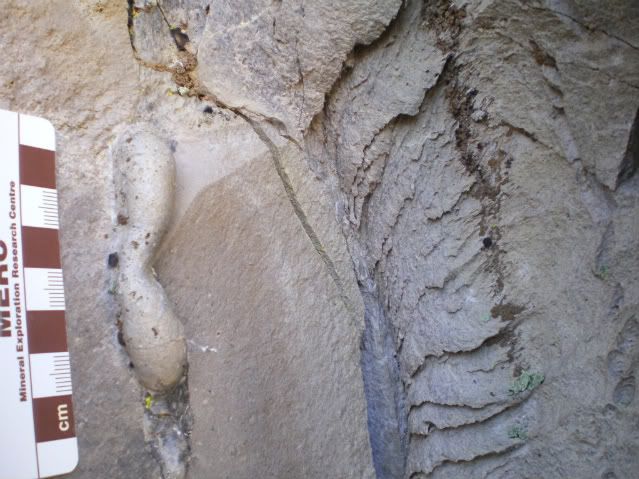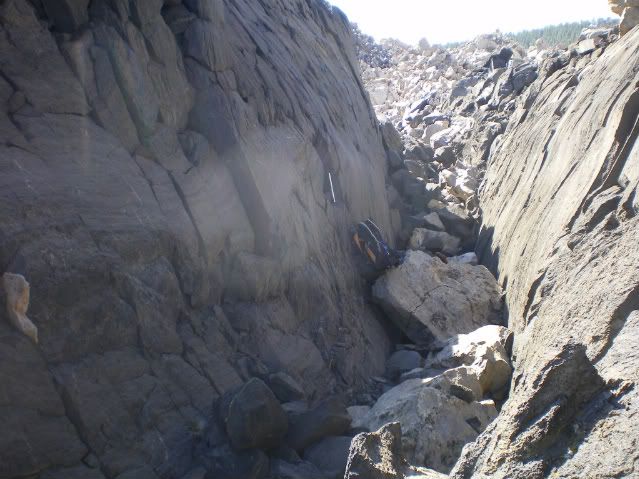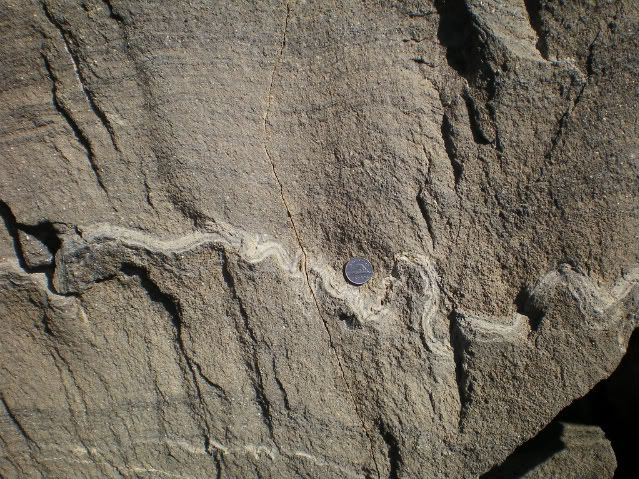One of the amazing aspects of geology is the ability to travel while simultaneously doing a job -- or is it really a job when you have so much fun? Obsidian Dome (and the entire Mono / Long Valley area for that matter) is a volcanic playground replete with compelling sites like Panum Crater , Mammoth Mountain , Hot Creek, and the infamous "CO2 Tree Kill" area at Horseshoe Lake. All of these site -- and more -- are quite photogenic.
To start off, I will tackle Obsidian Dome, (or as I like to refer to it "my baby" or "the sid"). Since I am studying how Obsidian Dome cooled from phase-observations and textural analysis, it is vitally important to make many observations at the macroscopic all the way down to microscopic scales. Because I had only ~7 days to take field data, I basically had enough time to "skim the surface." Nonetheless, each site I visited has a unique story. I have included three images below that exemplify some of the more interesting patterns found at Obsidian Dome.
This "drip feature" is interesting. Considering that rhyolite melt is quite viscous, it seems somewhat out of character. On the other hand, and perhaps a more likely scenario, it could be a tight fold which would indicate ductile deformation.
The above two photos are taken from a "crease structure" on Obsidian Dome. The upper photo shows the general scale of the structure (backpack for scale). The bottom photo is a close-up of a particularly interesting feature in the wall of the crease structure, Canadian nickel for scale. Note the disharmonic folding of a pronounced flow band. Flow banding is a pervasive feature of Obsidian Dome among other extrusions, (it is also how I arrived at my blog name). I will touch more on flow banding in a later post. But for now, enjoy these photos, and have a great weekend!
All photos (c) 2010 by Cole Kingsbury




No comments:
Post a Comment